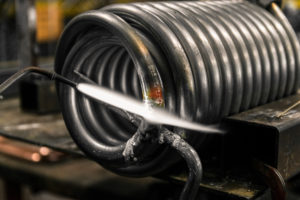When metal pieces such as pipes, faucets, ducts and electrical wires are joined together the process is called brazing or soldering based on how much heat is applied to the junction. Without silver, none of these connections would be as strong, leakproof or as electrically conductive as the original materials.
First, some definitions: Brazing is when materials are joined at temperatures above 600 degrees Celsius while soldering is the term for the joining process at temperatures below 600 degrees Celsius.
Adding silver to the process of soldering or brazing helps produce smooth, leak-tight, electrically conductive and corrosion-resistant joints. Silver brazing alloys are used in everything from air-conditioning and refrigeration to electric power distribution. They are also crucial in the automobile and aerospace industries.
Silver brazes and solders combine high tensile strength, ductility and thermal conductivity. Silver-tin solders are used for bonding copper pipe in homes, where they not only eliminate the use of harmful lead-based solders previously used, but also provide the piping with silver’s natural antibacterial action. Major faucet manufacturers also use silver-based bonding materials to incorporate these advantages. Refrigerator manufacturers use silver-based bonding materials to provide the flexibility required for constant changes in the temperature of the cooling tubes.
Because of health concerns, the traditional 63% tin/37% lead solder used to build electronic equipment is quickly being replaced by a combination of silver, tin and copper solder. The movement was boosted by the Restriction of Hazardous Substances (RoHS) legislation that applies throughout the European Union (EU). The law bans all products containing more than a trace amount of lead, mercury, cadmium and several other hazardous substances. Although the laws apply only to EU countries, there is a worldwide movement toward using safer solders. Silver is and will continue to be a popular and healthy substitution for the metals that are currently being phased out.
Brazing and alloys accounted for 49 Moz in 2022 representing a 3 percent decrease over 2021.

